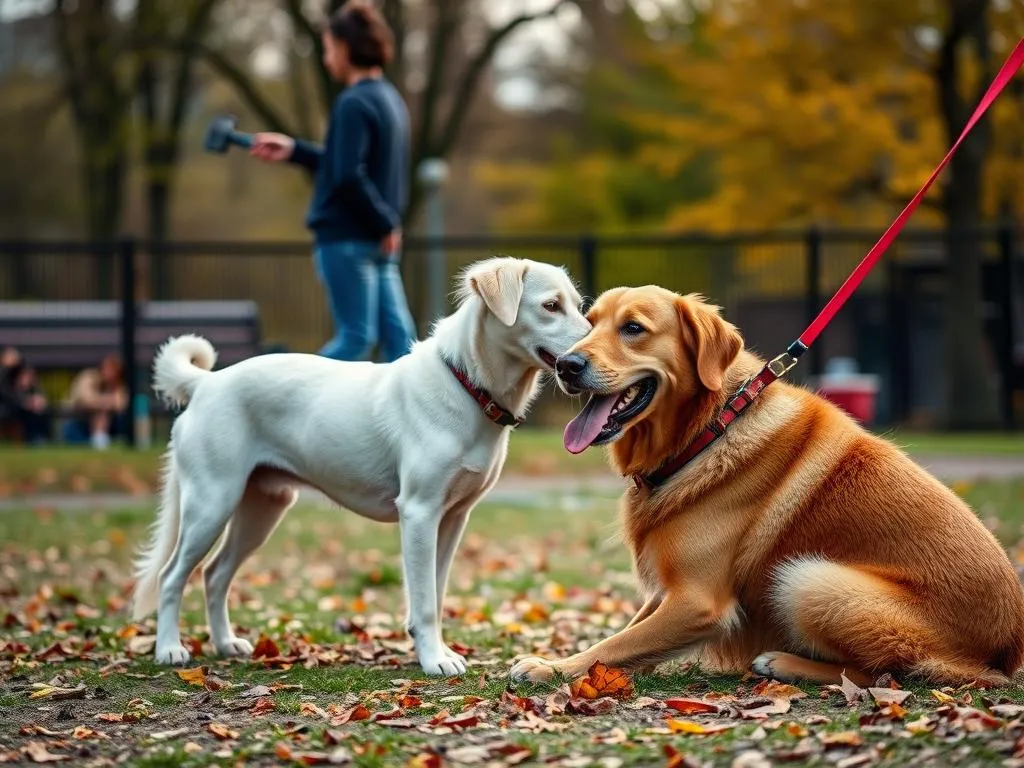
Introduction
Dog parks serve as valuable social spaces for dogs and their owners, providing a unique environment where dogs can engage, play, and socialize with other pets. However, while dog parks can be fantastic for fostering friendships and exercise, they also come with a variety of potential safety concerns. Understanding these dog park safety tips is essential for ensuring a safe and enjoyable experience for both you and your furry friend.
This article targets dog owners, particularly those who are first-time visitors to dog parks. We will explore a range of topics, including general safety tips, insights into dog behavior, park etiquette, and how to prepare for emergencies. By the end of this article, you will be well-equipped with the knowledge needed to make the most of your dog park experience.
Understanding Dog Park Dynamics
The Benefits of Dog Parks
Dog parks offer numerous benefits for dogs and their owners alike:
- Socialization for Dogs: Dog parks provide an excellent opportunity for dogs to interact with other dogs, which is essential for developing social skills and reducing anxiety in new situations.
- Exercise Opportunities: With plenty of space to run and play, dog parks allow dogs to expend energy, which is crucial for their physical health and mental well-being.
- Strengthening the Bond: Spending time at a dog park can enhance the bond between you and your dog through shared experiences and activities.
Common Risks in Dog Parks
Despite the advantages, there are also common risks associated with dog parks:
- Aggressive Behavior: Not all dogs are friendly, and conflicts can arise. Understanding how to manage these situations is crucial for safety.
- Illness Transmission: Areas frequented by many dogs can be breeding grounds for illnesses such as kennel cough, making it essential to keep vaccinations current.
- Injuries from Rough Play: Dogs can sometimes play too roughly, leading to injuries. Recognizing when play becomes aggressive is key to preventing accidents.
Pre-Visit Safety Considerations
Assessing Your Dog’s Readiness
Before heading to the park, it’s essential to evaluate if your dog is ready for the experience:
- Health Checks and Vaccinations: Ensure your dog is up-to-date with vaccinations and free from any illnesses that could spread to other dogs.
- Behavioral Evaluations: Consider your dog’s sociability and temperament. If your dog tends to be aggressive or overly shy, it may be worth seeking professional training before visiting a dog park.
Choosing the Right Dog Park
Not all dog parks are created equal. Here are some factors to consider:
- Researching Local Parks: Look for parks with safety features such as double-gated entries and separate areas for small and large dogs.
- Checking Reviews: Community feedback can provide valuable insights into the park’s safety and cleanliness.
Essential Dog Park Safety Tips
Before Entering the Park
Preparation is key when visiting a dog park:
- Ensuring Proper Identification: Make sure your dog has identification tags and is microchipped for safety.
- Bringing Necessary Supplies: Pack essential items such as a leash, water, waste bags, and any toys your dog enjoys.
Inside the Park
Once inside the park, it’s important to stay vigilant:
Monitoring Your Dog
Keep a close eye on your dog’s interactions with others:
- Watching Interactions: Pay attention to how your dog interacts with other dogs and humans. Look for signs of stress or discomfort.
- Recognizing Signs of Stress: Common signs include cowering, excessive barking, or hiding. If your dog shows these behaviors, it may be time to leave.
Understanding Dog Behavior
Familiarizing yourself with dog body language can help you gauge situations better:
- Common Dog Body Language: Dogs communicate through body language. A wagging tail usually indicates happiness, while a stiff posture can signal aggression.
- Knowing When to Intervene: If play becomes too rough or aggressive, step in calmly to redirect your dog’s attention.
Park Etiquette
Practicing good etiquette is vital for a harmonious dog park experience:
- Respecting Other Dogs and Owners: Maintain a respectful distance from other dogs and avoid forcing interactions.
- Cleaning Up After Your Dog: Always bring waste bags and clean up after your dog. This ensures a pleasant environment for everyone.
Emergency Preparedness
What to Do in Case of Aggression
In the unfortunate event of aggression:
- Steps to Take if a Dogfight Occurs: Remain calm and try to separate the dogs using loud noises or distractions. Never place yourself directly between fighting dogs.
- Recognizing When to Involve Staff: If the situation escalates, don’t hesitate to notify park staff or animal control for assistance.
First Aid for Dogs
Having basic first aid knowledge is crucial:
- Basic First Aid Tips: For minor injuries like cuts or scrapes, clean the area with water and apply a bandage if necessary. If your dog is bleeding or in significant pain, seek veterinary care immediately.
- Importance of a Pet First Aid Kit: Keep a first aid kit in your car or bag that includes essentials like antiseptic wipes, gauze, and bandages.
Contact Information
Always have emergency contacts readily available:
- Keeping Emergency Numbers Accessible: Write down your veterinarian’s contact information and poison control numbers. Having these on hand can save precious time in an emergency.
After the Park Visit
Post-Visit Assessment
After your visit, check your dog for any signs of injury or illness:
- Checking for Injuries: Look for cuts, scrapes, or unusual behavior. If your dog seems lethargic or unwell, consult a veterinarian.
- Importance of Post-Visit Socialization: Spend time bonding with your dog after the visit, reinforcing positive experiences and behaviors.
Cleaning Up After Your Dog
Maintaining hygiene is essential, both for your dog and the park:
- Best Practices for Dog Hygiene: Bathe your dog after a park visit, especially if they played in muddy or dirty areas. This helps prevent the spread of germs and keeps your home clean.
- Importance of Maintaining Park Cleanliness: A clean park is crucial for the enjoyment of all visitors. Ensure you leave the park as pristine as you found it.
Conclusion
Understanding and implementing dog park safety tips is vital for creating a safe and enjoyable experience for both you and your dog. By being aware of the dynamics of dog parks, preparing adequately, and practicing good etiquette, you can help ensure that your visits are fun and stress-free. Responsible dog ownership extends beyond just the park; it encompasses respect for the community and its members, both human and canine.
Encourage fellow dog owners to share their tips and experiences in the comments below. Together, we can foster a community of responsible pet ownership and enhance the joy of dog park visits for everyone involved.









